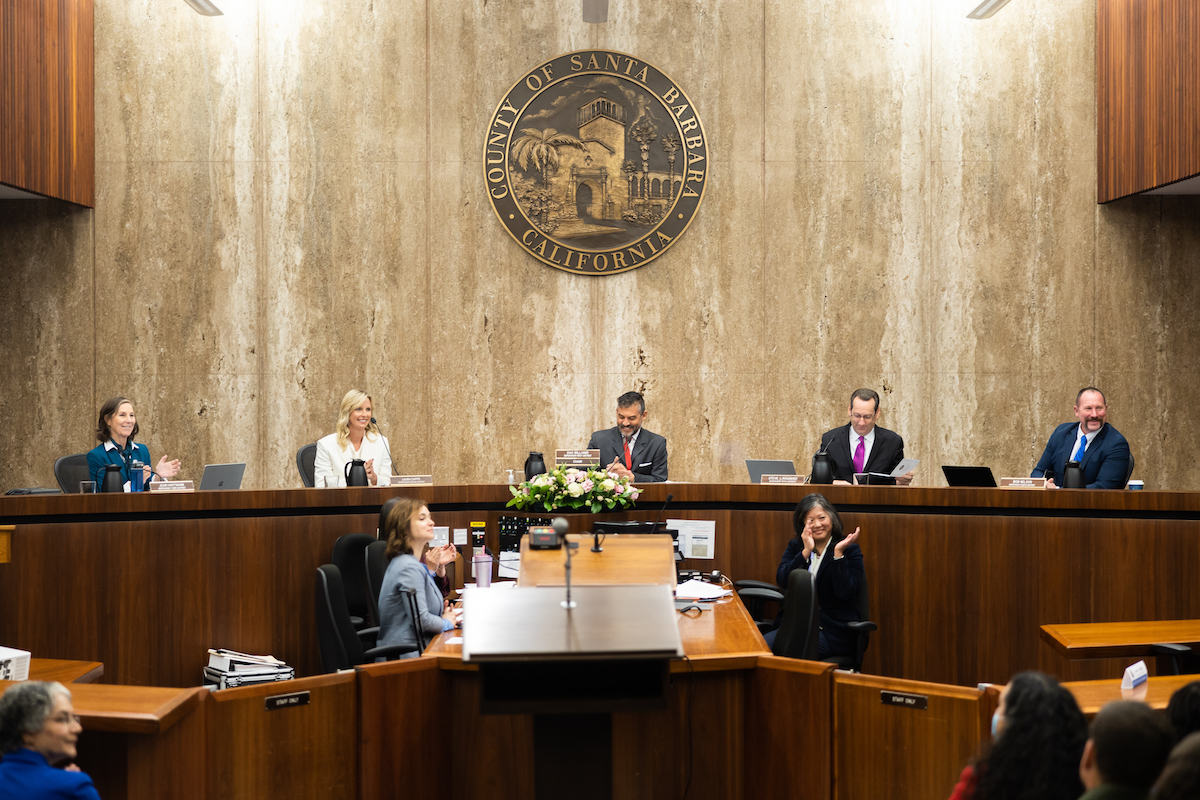California’s Involuntary Treatment Mandate for Addicts Questioned
Santa Barbara Supervisors Get Earful on How to Effectively Help Substance Abuse

It was almost the exact the opposite of sticker shock. When the county’s mental health czar Toni Navarro explained how it wouldn’t cost her department — Behavioral Wellness — a dime more to implement the single biggest change in California’s mental health law in 60 years, the question none of the supervisors could bring themselves to ask was how that could be. Instead, they left it to longtime mental health advocate Lynne Gibbs to express skepticism.
“This is a plan to make a plan,” Gibbs said. On the supervisors’ agenda was a report on how Behavioral Wellness and the county’s conservatorship program are working together to comply with a new state law — SB 43 — ramrodded through the legislature by Governor Gavin Newsom to significantly expand the number of people eligible to be placed on involuntary mental health holds.
Propelling Newsom has been a desperate sense of urgency over the large number of people on the street with chronic substance abuse issues so acute they impede their ability to medically or otherwise take care of themselves. This qualifies them to be defined as “gravely disabled.”
That new law went into effect in late 2023, amending a law first written in 1967 to protect the civil rights of people being institutionalized. California’s 58 counties were given two years to comply. All but two counties — San Luis Obispo and San Francisco — chose to delay implementation. In San Luis Obispo, the number of people placed on involuntary mental health holds has roughly doubled since SB 43 went into effect, the supervisors were told.
Santa Barbara’s Psychiatric Health Facility (PHF) — where people deemed to pose an imminent threat to themselves or to others (known as 5150 holds) stay — has only 16 beds and almost never any vacancies. (Over the past three years, the number of holds in Santa Barbara County has risen steadily by about 10 percent. This year, however, the numbers seem to be tapering off.)

Gibbs — and some supervisors — wondered where the additional beds were going to come from. And how they would be paid for. What wasn’t made as clear as it could have been Tuesday was that county mental health administrators hope to build a bigger, better new PHF unit, capable of holding far more people. To do so, they will apply for a $3.3 billion pot of money authorized by state voters in last year’s election to create new mental health beds for chronically homeless people. That grant will be submitted sometime in December.
Whether Santa Barbara gets it, however, has yet to be seen. If it doesn’t, the county will be seriously out of luck. When Newsom and the legislature passed SB 43, they provided not one cent of state funds to meet the additional demand. As county executive Mona Miyasato told the supervisors Tuesday, any programmatic changes will be paid for with discretionary dollars from the General Fund.
Even without new and expensive state mandates, Behavioral Wellness often finds its costs exceed revenues and has to dip into reserves. That’s not to say the supervisors were told the new mandates would be cost-free. It would require extra $485,000 extra per year to cover the cost of two new investigators and one new supervisor for the county’s conservatorship program that administers long-term care provided to individuals deemed incompetent to care for themselves.
That program, however, is run by a different department than Behavioral Wellness and is administered by Arlene Diaz, who works for another separate department. Diaz and Navarro meet regularly with each other, with state officials, and with their counterparts from other counties to discuss to implement the new mandates. For the time being, for example, the exact operational definition of “gravely disabled” still needs to be hammered out. Equally up in the air is how the bureaucratic DNA of Behavioral Wellness can be reengineered so that patients who have traditionally been treated by separate wings of Behavioral Wellness — mental health versus substance abuse — can now access seamlessly integrated treatment. That’s a major culture shift.
Making matters tougher still, Navarro noted, patients with substance abuse disorders are notoriously resistant to treatment when placed in involuntary holds. It is not, she mentioned more than once, an effective inducement for successful recovery. It is, however, the law. She and supervisor Joan Hartmann expressed muted optimism that some chronic abusers might seek treatment voluntarily when confronted by the prospect of an involuntary hold. All these details, the supervisors were informed, should be ready for prime time by next summer. That’s six months ahead of what the supervisors had been told a year ago.

Little wonder Suzanne Riordan, another longtime mental health activist, was so measured in her response. Riordan expressed how urgently needed the new services and programs were; she’d been attending way too many funerals, she said, of young adults, who have died of overdoses. Her own son had died of one many years ago. “If we seem a little nervous,” Riordan said, “it’s because we’ve been out here 20 years now.”











You must be logged in to post a comment.